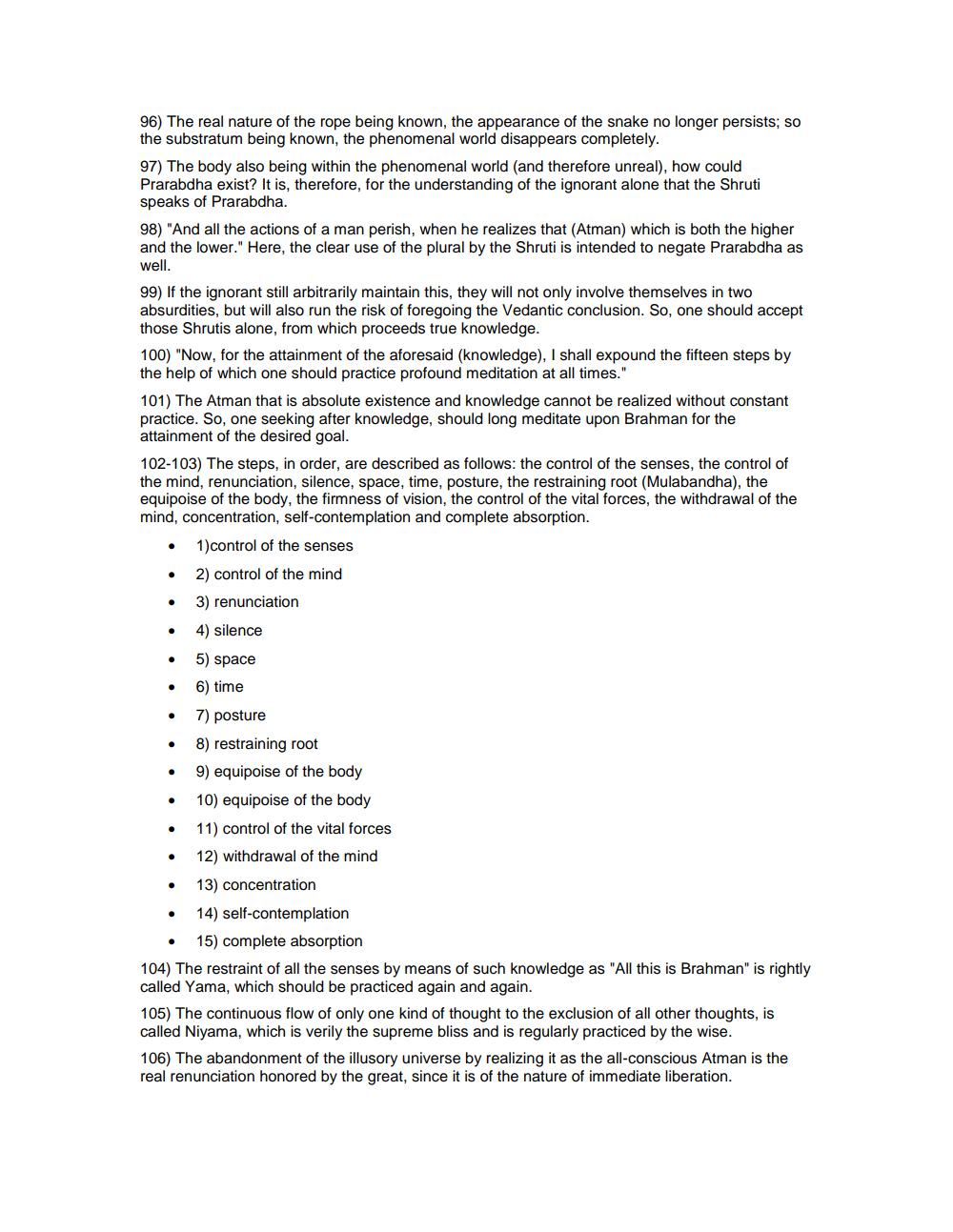Book Title: Direct Self Relization Author(s): Adi Shankaracharya Publisher: Unknown View full book textPage 6
________________ 96) The real nature of the rope being known, the appearance of the snake no longer persists; so the substratum being known, the phenomenal world disappears completely. 97) The body also being within the phenomenal world (and therefore unreal), how could Prarabdha exist? It is, therefore, for the understanding of the ignorant alone that the Shruti speaks of Prarabdha. 98) "And all the actions of a man perish, when he realizes that (Atman) which is both the higher and the lower." Here, the clear use of the plural by the Shruti is intended to negate Prarabdha as well. 99) If the ignorant still arbitrarily maintain this, they will not only involve themselves in two absurdities, but will also run the risk of foregoing the Vedantic conclusion. So, one should accept those Shrutis alone, from which proceeds true knowledge. 100) "Now, for the attainment of the aforesaid (knowledge), I shall expound the fifteen steps by the help of which one should practice profound meditation at all times." 101) The Atman that is absolute existence and knowledge cannot be realized without constant practice. So, one seeking after knowledge, should long meditate upon Brahman for the attainment of the desired goal. 102-103) The steps, in order, are described as follows: the control of the senses, the control of the mind, renunciation, silence, space, time, posture, the restraining root (Mulabandha), the equipoise of the body, the firmness of vision, the control of the vital forces, the withdrawal of the mind, concentration, self-contemplation and complete absorption. • 1) control of the senses • 2) control of the mind • 3) renunciation 4) silence 5) space 6) time 7) posture • 8) restraining root . 9) equipoise of the body • 10) equipoise of the body • 11) control of the vital forces • 12) withdrawal of the mind • 13) concentration • 14) self-contemplation . 15) complete absorption 104) The restraint of all the senses by means of such knowledge as "All this is Brahman" is rightly called Yama, which should be practiced again and again. 105) The continuous flow of only one kind of thought to the exclusion of all other thoughts, is called Niyama, which is verily the supreme bliss and is regularly practiced by the wise. 106) The abandonment of the illusory universe by realizing it as the all-conscious Atman is the real renunciation honored by the great, since it is of the nature of immediate liberation.Page Navigation
1 ... 4 5 6 7 8
